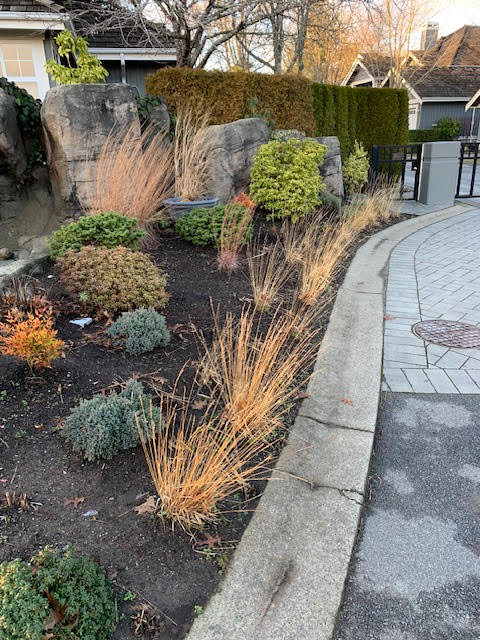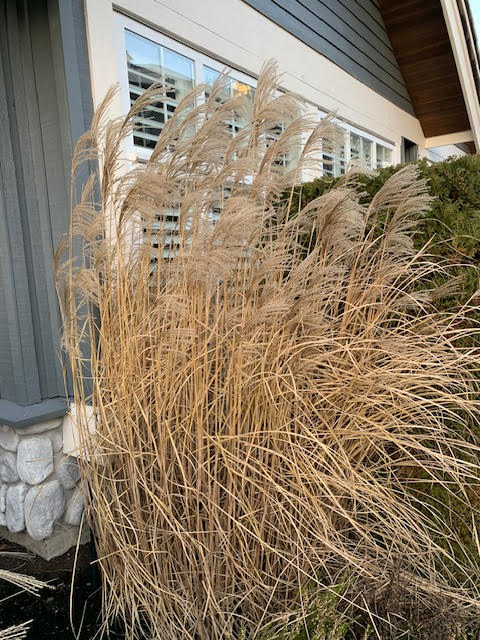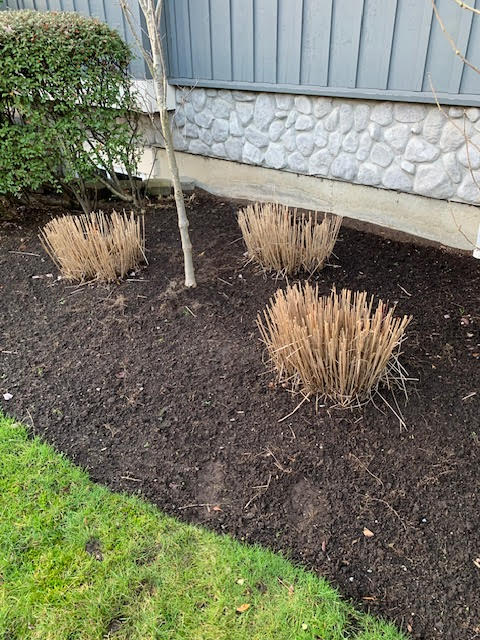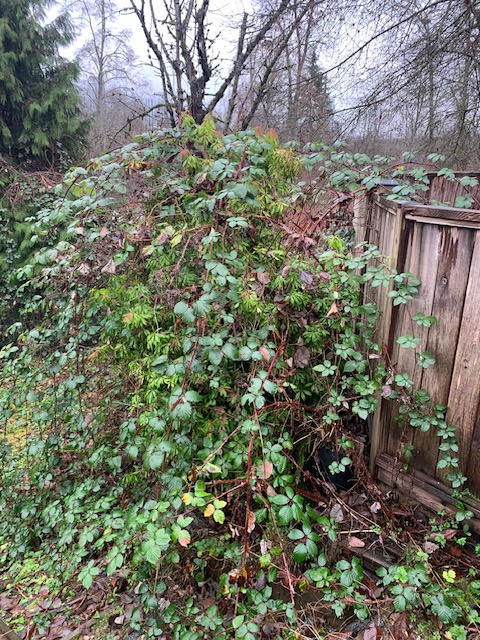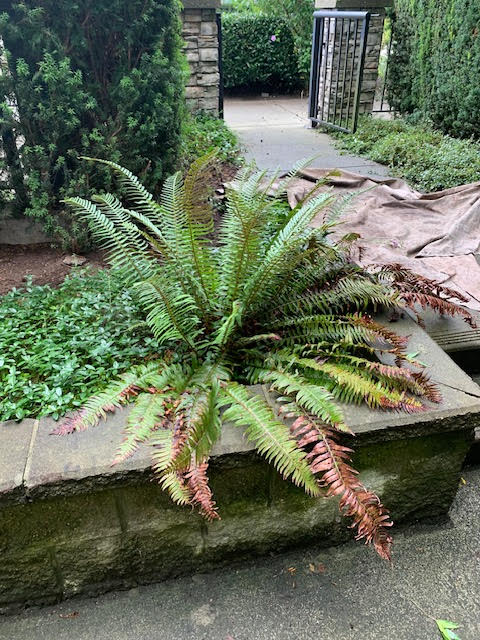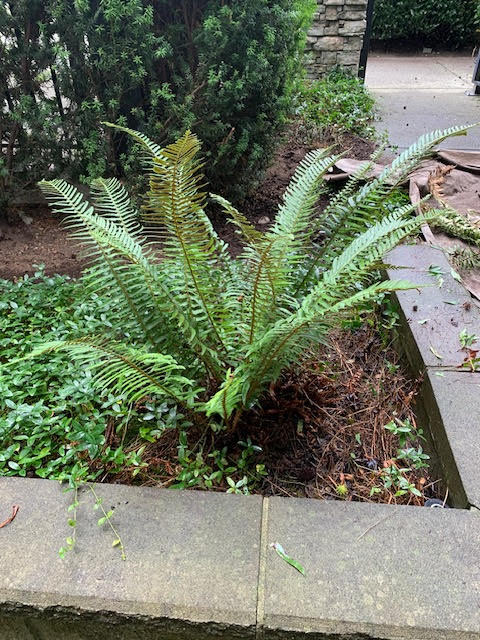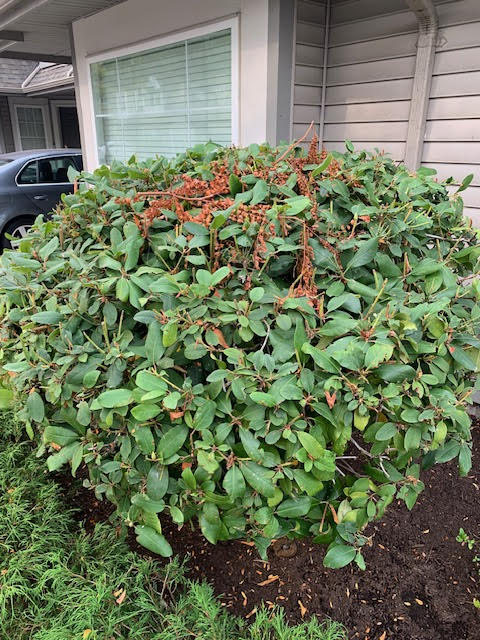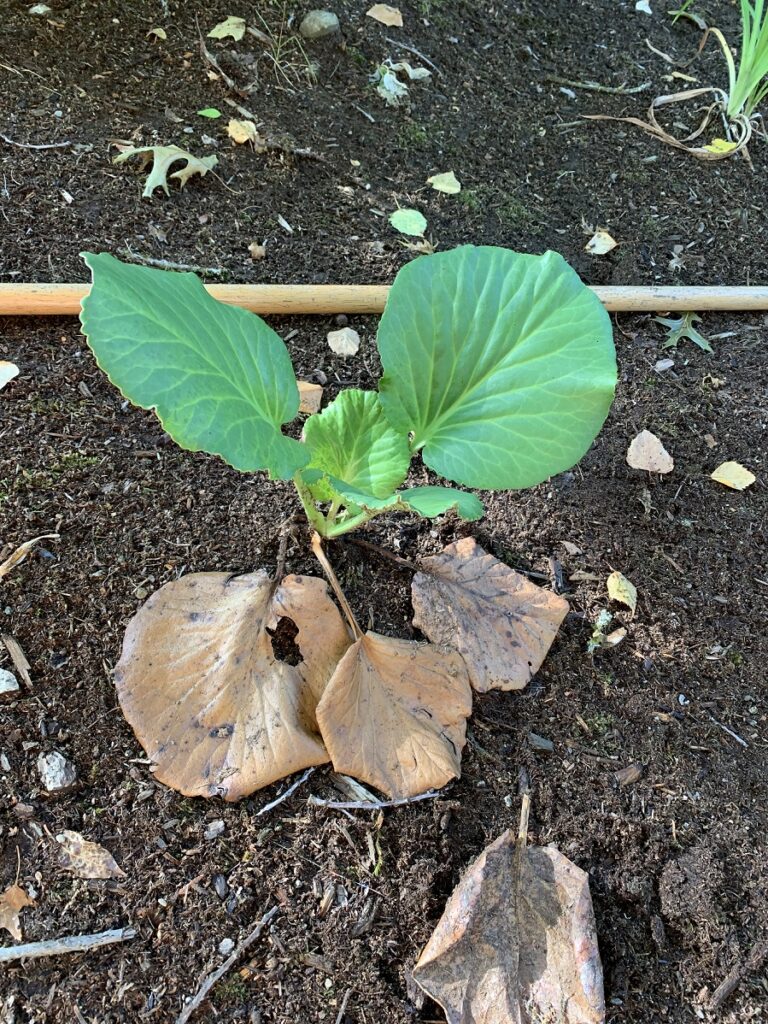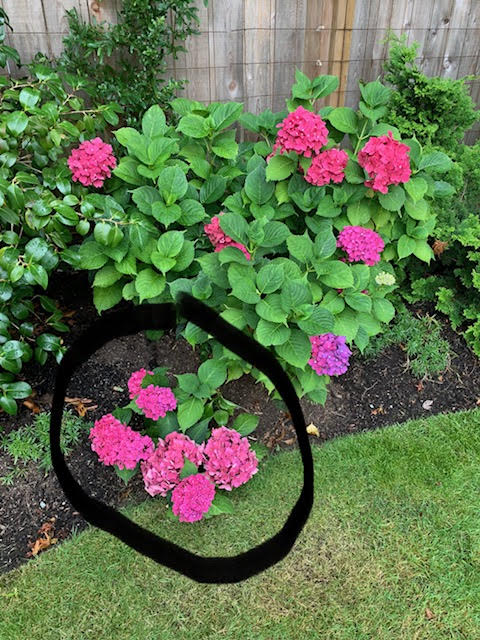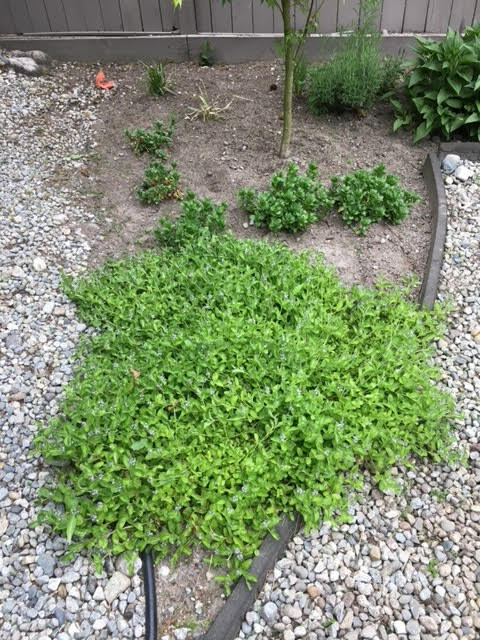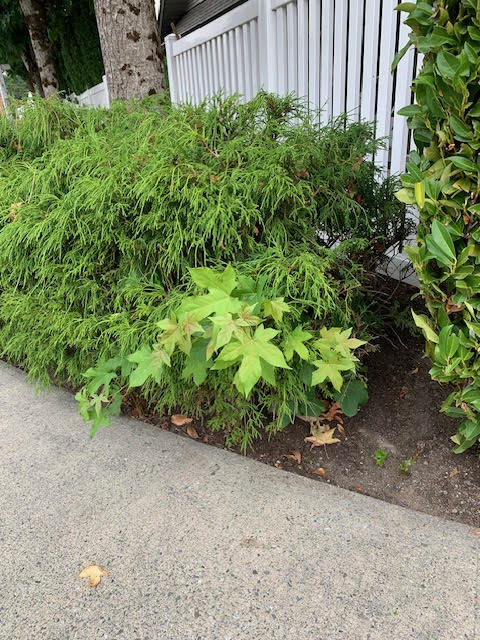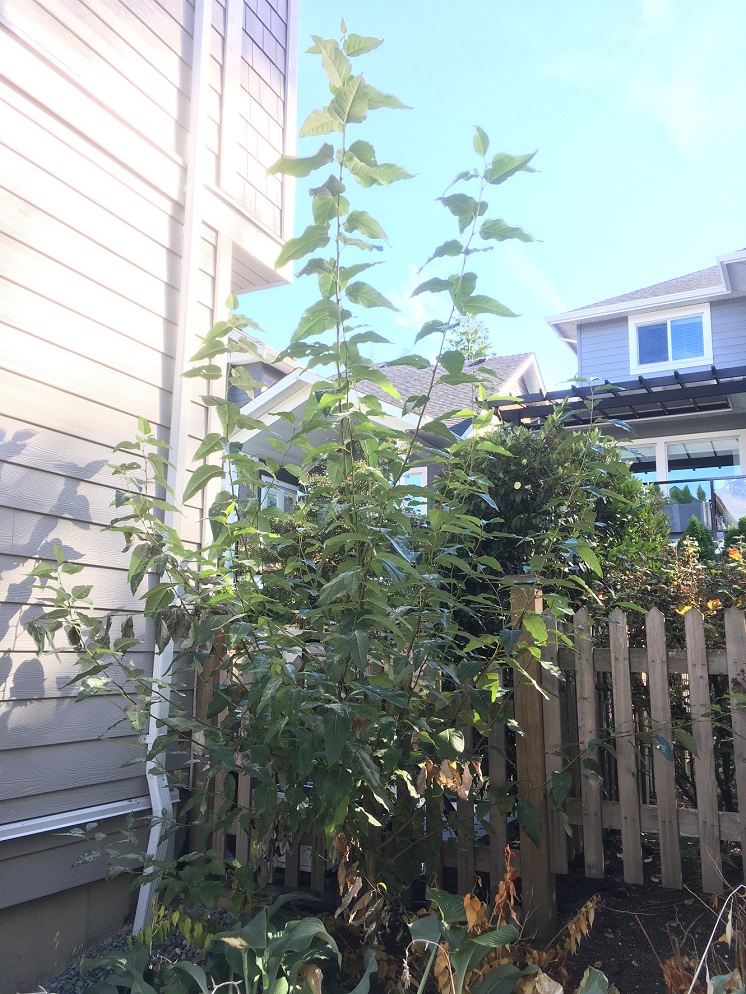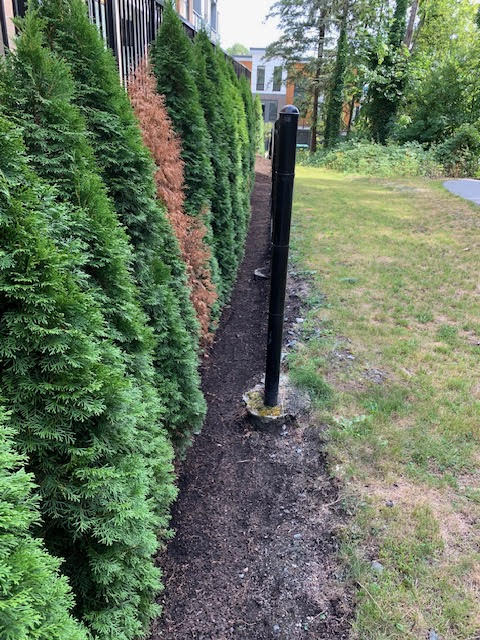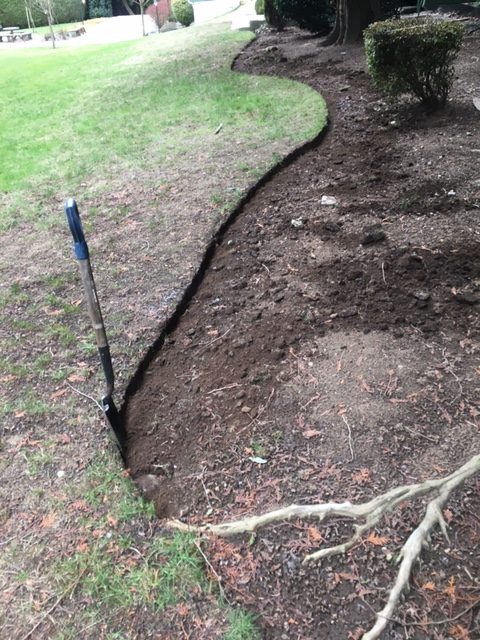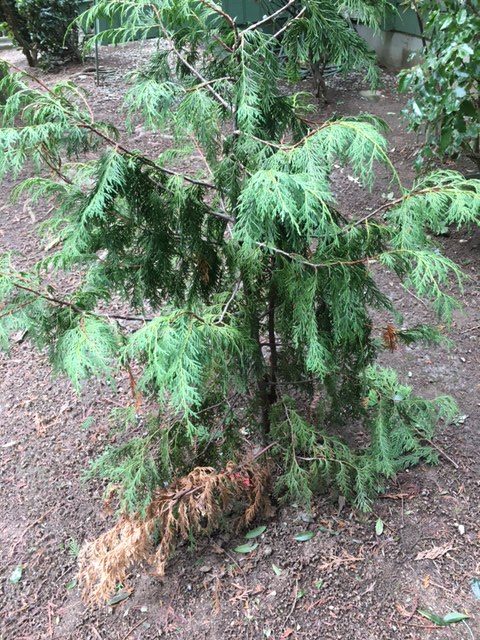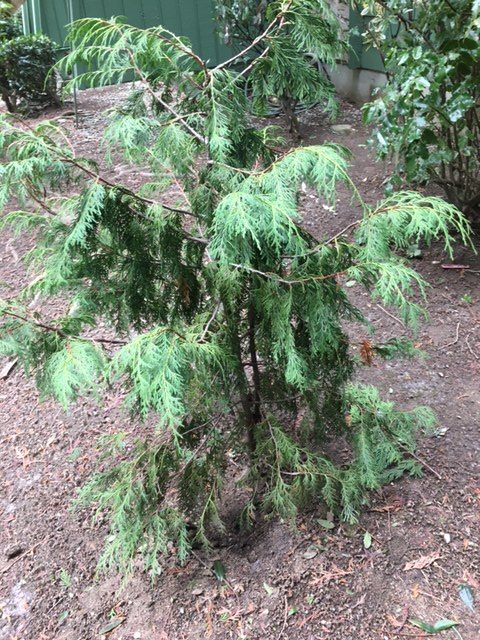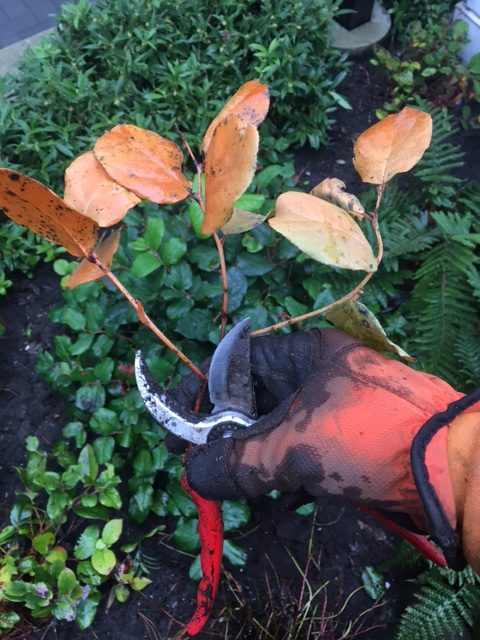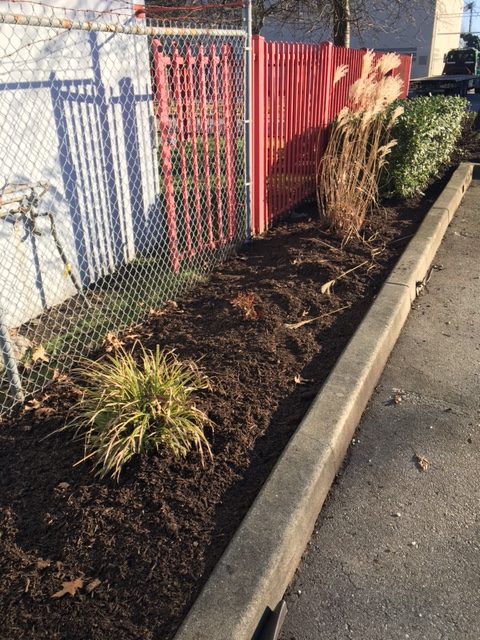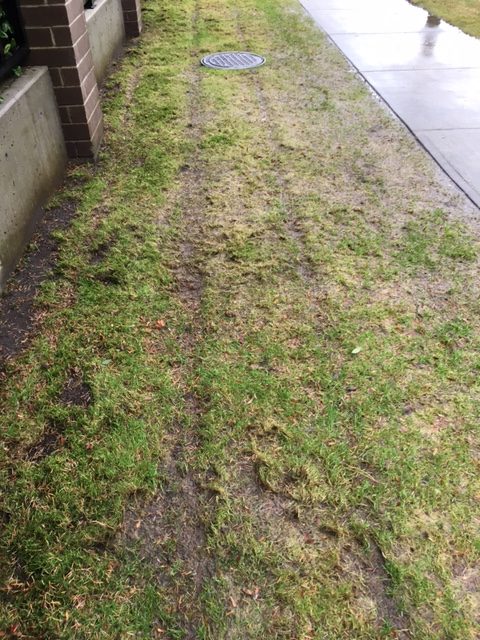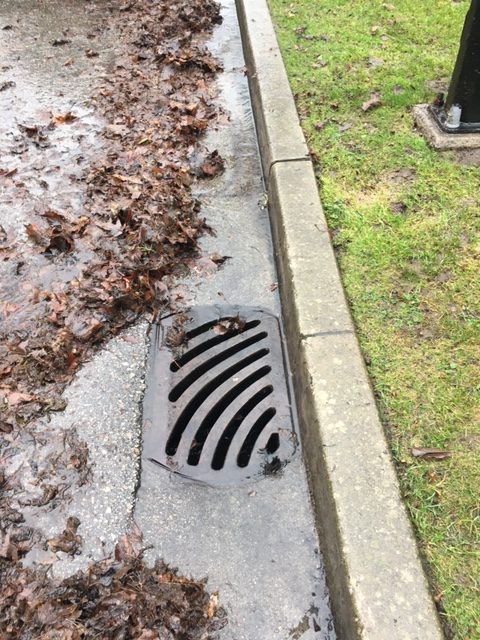Late season luck
The weather is always a deciding factor late in the season and so far this year it’s been great (knock on wood). Heading into the holiday season I was able to take care of lots projects. So let’s take a look at the adjustments I made for my clients. Perhaps it will inspire you to check over your own garden.
Lame Photinia

Now, this Photinia shrub is clearly struggling so I put it out of its misery. I love plants but this specimen looks awful, stuck between a fence and a large spruce tree. There is another Photinia just to the right so we’ll let it move in.
Don’t be afraid to do some editing in your garden. Start over if you have to.
Brown spots

This brown spot is probably visible from space and it’s easy to fix with one cut. The trick is to carefully reach into the cedar hedge and make the cut there. We don’t want to see anything sticking out.
When you do this you can expect to create a hole in your hedge which is unfortunate. In this case it wasn’t bad at all.
Tree stubs

This topic shows up almost every year because I see stubs all the time. Take a look at the black button on the left. It’s a stub the tree can’t quite cover up. We have to wait for it to die and break up, or we can cut it to help the tree. Also remove the sprouts.
The spot in the middle is an old cut that got nicely covered up. Trees know what to do so help them by not leaving tree stubs.
Can’t exit your car?
Are your Spirea shrubs preventing you from exiting your car? Take them down hard now or else they will just keep on pushing into the stall. The shrubs are forgiving so reduce them now. I did it by hand, which is slower but it also eliminates having to chase down shredded branch bits. It’s also quiet and relaxing; just make sure you know where your fingers are when you grab a handful of stems.

Cherry and leaf drop

Adjustment one is mandatory because the city has asked the owner to prune her cherries to improve sight lines. They’re asking for a 2.5 m clearance so I raised all of the trees off the road gently. The only is very touchy about her ‘Akebono’ cherries. When they flower in spring, people stop by to take pictures. To be honest, all of the trees need some pruning.
Adjustment two made me laugh. The lady texted me asking if there is still time to pick up her leaves. Oh, my, she’s lucky I know her. She had avalanches of soggy, decomposing leaves still on her lawn just days before Christmas.
If you want to kill your grass this is how you do it. The piles of leaves will smother your lawn and turn it yellow underneath. Never do this! Shred the leaf drop when conditions are still dry, not on Christmas day. Or rake up the leaves and compost them; shredding is also recommended in this step.
Chafer beetle damage

There isn’t much we can do about European chafer beetle grubs but you could rake this mess over and add soil. Overseed only when we get higher temperatures in spring.
Since this area has terrible access for stump grinders you can chain saw the pine tree stump as close to the ground as you can manage. Or you can dig it up, in which case the joystick leftover will help you to dislodge it.
Conclusion
There you go. As you head into 2025 take a good look at your garden and identify adjustments you can make. If Proper Landscaping maintains your building, ask them for help. Otherwise, message me for help.





